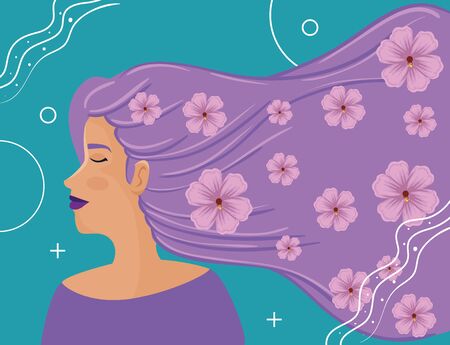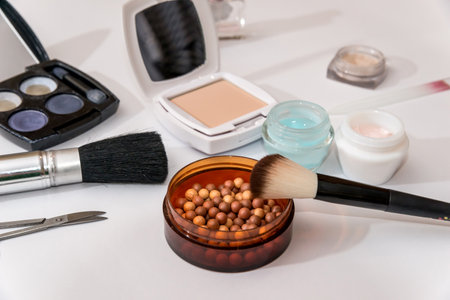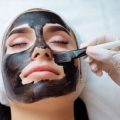1. Understanding the K-Beauty Layering Philosophy
When it comes to K-Beauty, layering is more than just a trend—it’s a skincare philosophy rooted in maximizing every drop of goodness from your products. Unlike Western routines that often focus on a few multitasking products, K-Beauty emphasizes using several lightweight layers to target specific skin needs. This approach ensures your skin gets the most out of each ingredient without feeling heavy or greasy.
Why Lightweight Layering Matters
The secret sauce behind the K-Beauty routine? It’s all about how you apply your products. Lighter formulas are absorbed quickly, allowing active ingredients like hyaluronic acid, niacinamide, and botanical extracts to work their magic deep in your skin. Think of it like building a sandwich—each layer has its purpose and flavor, but together they create something truly satisfying for your complexion.
How Layering Boosts Ingredient Absorption
| Step | Type of Product | Main Function | Key Ingredients |
|---|---|---|---|
| 1 | Toner/Essence | Hydrate & Prep Skin | Glycerin, Hyaluronic Acid, Green Tea |
| 2 | Serum/Ampoule | Target Specific Concerns | Vitamin C, Niacinamide, Peptides |
| 3 | Lotion/Emulsion | Light Moisturizing Layer | Ceramides, Squalane, Centella Asiatica |
| 4 | Cream/Oil | Seal in Moisture & Actives | Shea Butter, Jojoba Oil, Panthenol |
| 5 (AM only) | Sunscreen | Protect from UV Damage | Zinc Oxide, Titanium Dioxide, Chemical Filters |
The Science Behind It All
Your skin can only absorb so much at once. By applying products from thinnest to thickest texture, you help each ingredient sink in before sealing everything with richer creams or oils. This method prevents pilling (that annoying product balling) and helps sensitive or acne-prone skin avoid feeling overwhelmed.
2. Start with a Clean Slate: Double Cleansing Essentials
If you’re serious about getting the most out of your K-beauty routine, starting with a clean canvas is non-negotiable. Double cleansing—one of the signature steps in Korean skincare—ensures your skin is totally free from makeup, sunscreen, oil, and daily grime before you layer on other products. Why does this matter? Because leftover residue can block your serums and moisturizers from working their magic. Here’s how to do it right for your skin type.
What Is Double Cleansing?
Double cleansing means using two different types of cleansers, one after another:
- Oil-based cleanser: Melts away oil-based impurities like sunscreen, makeup, and excess sebum.
- Water-based cleanser: Washes off sweat, dirt, and any leftover debris for truly clean skin.
Choosing the Right Cleansers for Your Skin Type
| Skin Type | Best Oil-Based Cleanser | Best Water-Based Cleanser |
|---|---|---|
| Oily/Acne-Prone | Lightweight cleansing oils (grape seed, tea tree) | Gel or foaming cleansers with salicylic acid or tea tree extract |
| Dry/Sensitive | Cleansing balms or oils with jojoba or camellia oil; fragrance-free formulas | Cream or milk cleansers with ceramides or hyaluronic acid |
| Combination | Mild cleansing oils (rice bran, argan oil) | Gentle foaming cleansers; avoid harsh sulfates |
| Normal | Most oil cleansers will work; look for vitamin E or green tea extract | Pearl-sized amount of gel or foam cleanser; pH-balanced options are best |
Ingredient Watch: What to Look For & Avoid
- Avoid: Harsh alcohols, artificial fragrance (especially if sensitive), and sulfates that can strip your skin barrier.
- Look for: Soothing botanicals like centella asiatica, calming green tea, nourishing squalane, and non-comedogenic oils.
Why a Clean Canvas Matters for Layering K-Beauty Products
If there’s one thing every K-beauty pro will tell you: effective layering starts with spotless skin. If your pores are clogged with leftover foundation or city dust, those next-level serums and ampoules can’t penetrate deeply—which means wasted product and less glow. Think of double cleansing as prepping a smooth surface before painting; you want everything that follows to sink in evenly and work harder for you.

3. Toners and Essences: Prepping Your Skin
If you want to get the most out of your K-Beauty routine, understanding how to use toners and essences is key. These products are like the foundation for everything else you put on your face—think of them as the “prep” step before your serums and moisturizers.
What’s the Difference Between Toners and Essences?
| Product | Main Purpose | Texture | When to Use |
|---|---|---|---|
| Toner | Balances pH, removes leftover impurities, hydrates lightly | Watery, fast-absorbing | Immediately after cleansing |
| Essence | Boosts hydration, preps skin for active ingredients, helps absorption | Slightly thicker than toner but still lightweight | Right after toner, before serums |
K-Beauty Ingredients to Look For
- Centella Asiatica (Cica): Soothes redness and calms irritation—great for sensitive or breakout-prone skin.
- Green Tea Extract: Fights free radicals and soothes inflammation; perfect for stressed or tired skin.
- Niacinamide: Brightens dullness and evens out skin tone—if you want that signature K-Beauty glow.
- Hyaluronic Acid: Delivers deep hydration without feeling heavy; a must if your skin feels dry in American climates.
- Fermented Ingredients (like Galactomyces): Help with cell renewal and give skin a fresh, youthful look.
Toner & Essence Tips for American Lifestyles
- Look for Multi-Taskers: Choose formulas that combine hydration and soothing benefits so you can keep your routine short but effective.
- No Need to Overdo It: In the U.S., where time is tight, stick to 1-2 layers instead of the 7-skin method unless you have extra time or very dry skin.
- Travel-Friendly Options: Go for toners and essences that come in mist or travel sizes so you can refresh on-the-go—especially after workouts or during long commutes.
- Check for Fragrance-Free Formulas: If you have sensitive skin or allergies (common concerns in many parts of America), opt for products labeled “fragrance-free.”
- Pump or Spray Packaging: These are more hygienic and convenient if you’re sharing a bathroom or rushing in the mornings.
How to Apply for Best Results
- Cleansing comes first—start with a gentle cleanser suited for your skin type.
- Saturate a cotton pad with toner (or just use clean hands), then gently pat onto your face. Don’t rub!
- Pour a small amount of essence into your palms and press it into your skin until absorbed. Layer once more if your skin feels extra thirsty.
- Your skin should feel plump and slightly dewy—not sticky—before moving on to serums or treatments.
K-Beauty Toner & Essence Picks Suited for U.S. Skin Concerns:
- Drier Climates (like California or Colorado): Try thicker hydrating toners with hyaluronic acid and ceramides.
- Sensitive/Redness-Prone Skin (common after winter in New York or Chicago): Look for centella asiatica-based formulas and calming essences with madecassoside.
- Dullness from City Pollution (big-city living!): Niacinamide-rich essences help brighten up tired complexions fast.
This careful layering of toners and essences sets the stage for all your following K-Beauty steps—and makes sure your skin gets every bit of goodness from each product!
4. Serums and Ampoules: Targeted Treatments
When it comes to K-Beauty, serums and ampoules are the MVPs for delivering powerful active ingredients right where your skin needs them most. But with so many trending actives like vitamin C, niacinamide, and snail mucin on the market, how do you choose what’s best for your skin—and layer them correctly for maximum results? Let’s break it down!
Understanding Trending K-Beauty Actives
K-Beauty serums and ampoules often feature cutting-edge ingredients that target specific skin concerns. Here are some of the most popular ones:
| Active Ingredient | Main Benefit | Who Should Use It? |
|---|---|---|
| Vitamin C (Ascorbic Acid) | Brightens skin, fades dark spots, boosts glow | Dullness, hyperpigmentation, uneven tone |
| Niacinamide | Reduces redness, controls oil, minimizes pores | Sensitive, oily or combination skin; redness |
| Snail Mucin | Deep hydration, repairs barrier, soothes irritation | Dry, dehydrated, or irritated skin |
| Centella Asiatica (Cica) | Calms inflammation, heals acne scars | Sensitive or acne-prone skin |
| Peptides | Boosts collagen, firms skin, reduces wrinkles | Mature or aging skin; loss of elasticity |
| Hyaluronic Acid | Hydrates deeply, plumps up skin | All skin types needing extra hydration |
How to Choose the Right Serum or Ampoule for Your Skin Concerns
The key is to listen to what your skin is telling you. If you’re noticing dullness and dark spots, reach for a vitamin C serum in the morning. If you struggle with redness or frequent breakouts, niacinamide or centella asiatica can help calm things down. For dry or flaky patches, look for snail mucin or hyaluronic acid-based formulas. You can even layer more than one serum if needed—just be mindful of how your skin responds.
Tips for Layering Serums and Ampoules in Your K-Beauty Routine
- Apply after toner or essence. Serums and ampoules come right after toners/essences and before moisturizer. This way, their smaller molecules penetrate effectively.
- Layer from thinnest to thickest. Start with watery serums first (like vitamin C), then move to thicker or more viscous formulas (like snail mucin).
- Avoid ingredient clashes. Some actives don’t play well together—like vitamin C with strong acids or retinol. If you want to use both, alternate mornings and nights instead of layering at the same time.
- PAT gently—don’t rub. Use your fingertips to pat each serum into your face. This helps absorption without irritating your skin.
- If using multiple serums:
- Mornings: Vitamin C → Niacinamide → Moisturizer → Sunscreen
- Nights: Hydrating serum (Hyaluronic Acid/Snail Mucin) → Repairing serum (Peptide/Cica) → Moisturizer
K-Beauty Pro Tip:
If your skin feels sticky after layering serums and ampoules, wait 1–2 minutes between each step so everything absorbs fully before moving on.
5. Moisturizers and Emulsions: Locking in the Goodness
Once youve layered your essence and serum, it’s time to seal all that hydration and active goodness with moisturizers and emulsions. This step is key in K-Beauty routines because it helps lock in everything you’ve already applied, making sure your skin stays nourished and hydrated all day (or night) long.
Emulsions vs. Moisturizers: Whats the Difference?
While both emulsions and moisturizers help hydrate your skin, they have some differences in texture and function. Here’s a quick breakdown:
| Product Type | Texture | Main Function | Best For |
|---|---|---|---|
| Emulsion | Lightweight, milky, fluid-like | Delivers hydration without heaviness | Oily, combination, or acne-prone skin; layering under heavier creams |
| Moisturizer (Cream/Lotion) | Creamy, thicker, sometimes richer | Seals in all layers and prevents moisture loss | Dry, normal, or mature skin; final step before SPF at daytime or sleeping mask at night |
How to Pick the Best Texture for Your Skin Type
The right texture makes a world of difference in how comfortable and effective your routine feels. Here are some quick tips:
- Oily/Combination Skin: Go for light emulsions or gel creams that won’t clog pores.
- Dry/Mature Skin: Choose rich creams or balms that provide extra nourishment and help strengthen the skin barrier.
- Sensitive Skin: Look for fragrance-free options with soothing ingredients like centella asiatica or madecassoside.
- Normal Skin: You can mix and match! Layer an emulsion first, then a lightweight cream if you need extra moisture.
Pro Tips for Sealing in All Previous Layers
- Pat, Don’t Rub: Use your palms to gently press the product into your skin—this helps prevent irritation and improves absorption.
- Layer Wisely: If using both an emulsion and moisturizer, apply emulsion first (it’s lighter), then follow up with your moisturizer.
- Avoid Over-Applying: Start with a small amount—your skin should feel hydrated but not greasy.
- Tweak Seasonally: Use lighter products during summer and richer ones when the air is dry or cold.
K-Beauty Ingredient Spotlight: What to Look For?
- Ceramides & Hyaluronic Acid: Great for deep hydration and strengthening your skin’s natural barrier.
- Squalane & Jojoba Oil: Lightweight oils that mimic skins own sebum—perfect for sealing in moisture without feeling heavy.
- Cica (Centella Asiatica): Soothes redness and irritation—especially nice if you’re layering lots of actives.
Nailing this step ensures all those amazing K-Beauty layers underneath stay put—and keeps your skin soft, bouncy, and glowing!
6. Sunscreen: The Non-Negotiable Last Step
If you’re into K-Beauty, you already know sunscreen is a must—and not just for summer. In Korean skincare routines, sun protection is considered the most important step, every single day, no matter what. This philosophy is all about prevention: guarding your skin from UV damage, premature aging, and dark spots before they even start.
Why Sunscreen Matters in the U.S.
Whether you’re dealing with hot Miami sun or chilly Seattle mornings, American climates can be surprisingly harsh on skin. UV rays are present all year round—even when it’s cloudy—so skipping SPF means risking long-term damage. That’s why K-Beauty routines put sunscreen as the final, non-negotiable step to lock in all your previous products and protect your skin barrier.
Finding Your Perfect K-Beauty SPF
K-Beauty sunscreens are known for being ultra-lightweight and makeup-friendly, making them perfect for daily wear in the U.S., where we love a fresh-faced look. Here’s how to choose one that fits your needs:
| Concern | SPF Type | Best For |
|---|---|---|
| Oily/Acne-Prone Skin | Gel or Watery Essence SPF | No greasy feel, won’t clog pores |
| Dry/Sensitive Skin | Creamy or Moisturizing SPF | Adds hydration, soothes irritation |
| Makeup Wearers | Light Fluid or Hybrid SPF | Sits well under foundation, no pilling |
Pro Tips for Layering Sunscreen with K-Beauty Products
- Apply last: Always use sunscreen as your very last skincare step (right before makeup).
- Don’t skimp: Use about a nickel-sized amount for your face and more for your neck.
- Reapply: If you’ll be outdoors for long periods, reapply every two hours—even over makeup! Try cushion compacts or SPF mists for easy touch-ups.
- Avoid heavy formulas: Look for “non-comedogenic” or “weightless” on the label to keep things comfortable all day.
K-Beauty Sunscreen Ingredients to Look For:
- Cica (Centella Asiatica): Calms redness and strengthens skin barrier—great for sensitive skin.
- Aloe Vera: Hydrates without feeling sticky.
- Niacinamide: Helps brighten and even out skin tone while protecting against sun damage.
- Zinc Oxide & Titanium Dioxide: Physical filters ideal for sensitive or reactive skin types.
The bottom line: Sunscreen is never optional in any K-Beauty layering routine—especially with America’s diverse weather conditions. Choose a formula that works with your skin type and makeup preferences to keep your glow protected all year long!


